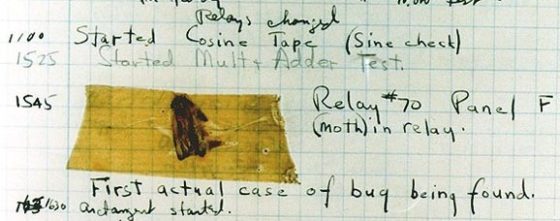Mostly correct , it was a "partial bug" wing of a moth to be exact. Although it gets popularized as the first bug it is not.Admiral Hopper was the one who found an actual bug in a computer program. In a computer that filled a gymnasium she did find a moth caught in a relay, hence the term BUG in a programs was born.
Something she is to be credited with is the first "compiler" (that is even a bit of a stretch) and the first "patch"


A common misconception is that a software bug is called a bug because of an actual bug – a moth – that got stuck in Harvard University’s Mark II calculator in 1947. The story goes that Grace Hopper found it, taped it inside a logbook with the words “First actual case of bug being found”.
In reality Grace herself didn’t find the bug – somebody else from the team did – nor did they coin the term bug because of that event.
American engineers have been calling small flaws in machines “bugs” for over a century. Thomas Edison talked about bugs in electrical circuits in the 1870s. When the first computers were built during the early 1940s, people working on them found bugs in both the hardware of the machines and in the programs that ran them.
Lastly COBOL "common business-oriented language". COBOL was a programming language implemented as the first phase of a beginning , middle and end solution. Grace Hopper was a significant part of the committee that created COBOL but not the sole inventor.
Only the first phase of COBOL was ever written having never progressed as far as the middle and advanced stages. So an interim solution that has spanned 70+ years ...
Built on previous research were projects that were all Grace Hopper that deserve all due credit.
The A-0 , A-1, A-2 compiler
built on
Flow-matic (a Grace Hopper project that progressed to "Business Language version 0" then COBOL
OKAY
Done splitting hairs here. The point is we now stand on the shoulders of giants. Grace Murry Hopper was one of them .
